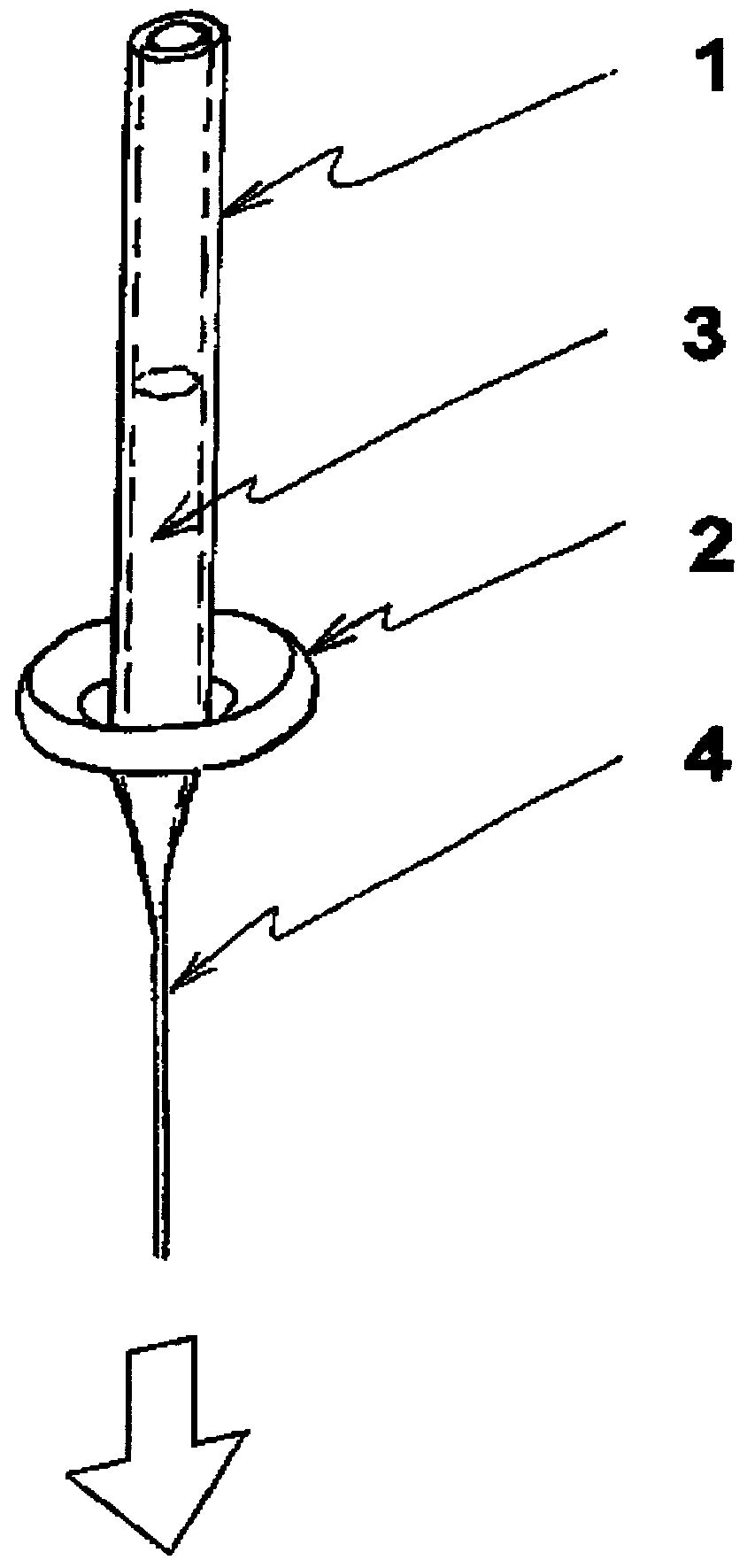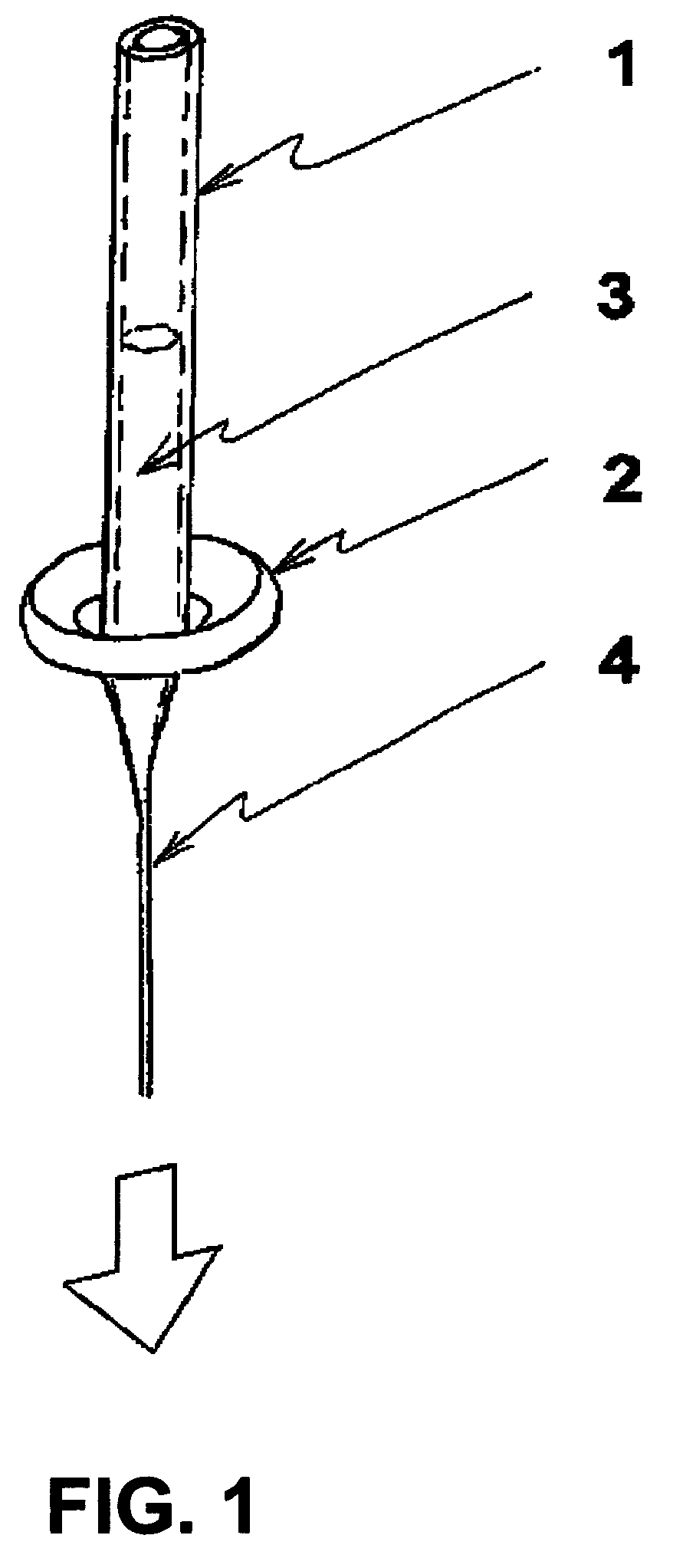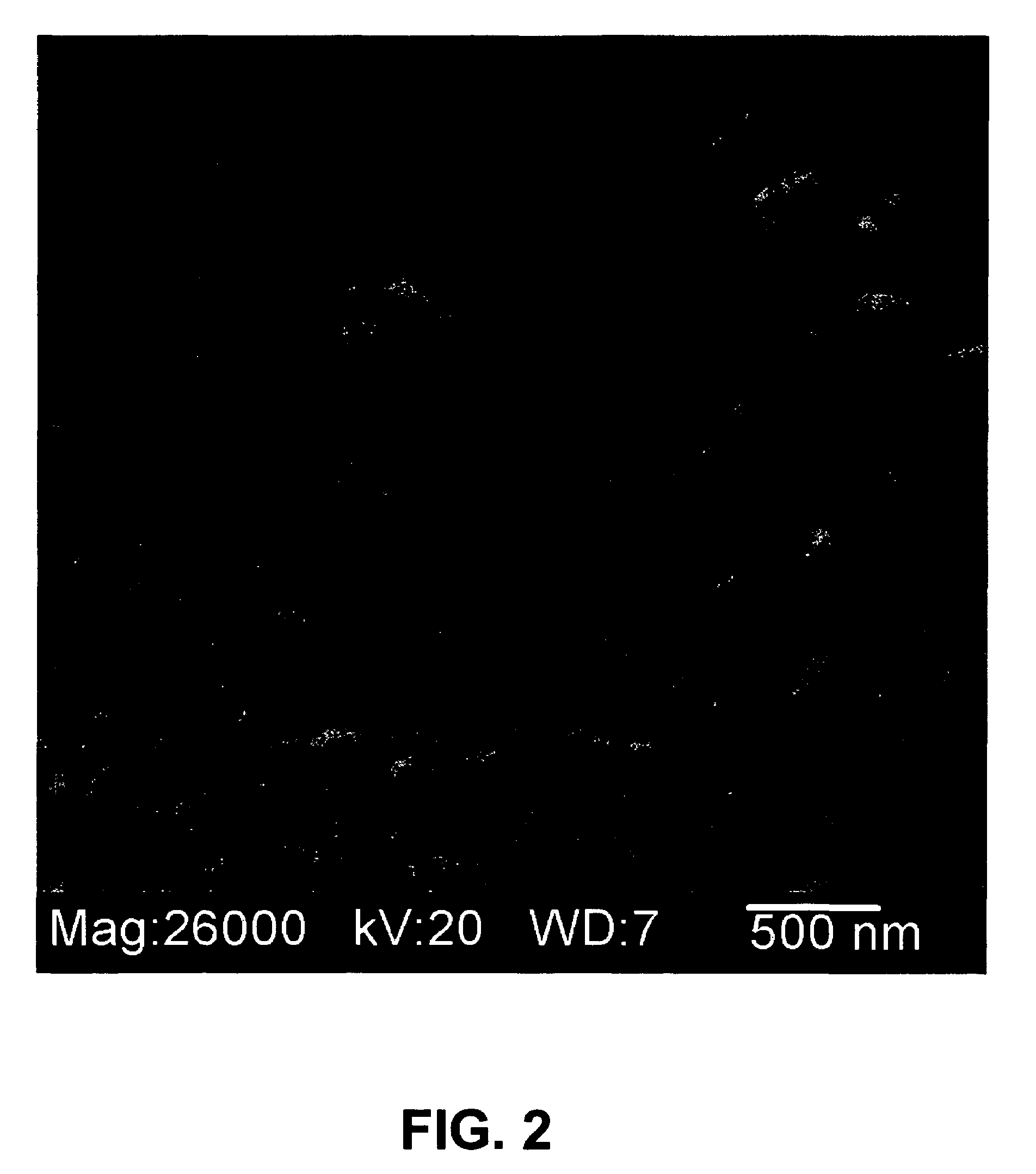Polymerase chain reaction using metallic glass-coated microwire
a technology of polymerase chain reaction and microwire, which is applied in the direction of film/foil adhesive, magnetic body, biomass after-treatment, etc., can solve the problems of generating numerous copies of irrelevant, erroneous conclusions, and product rendering useless
- Summary
- Abstract
- Description
- Claims
- Application Information
AI Technical Summary
Benefits of technology
Problems solved by technology
Method used
Image
Examples
example 1
[0045]An ingot composed of an amorphous-forming metallic alloy is prepared by loading the appropriate weights of constituent elements into a quartz tube that is sealed at one end. The other end of this quartz tube is connected to a pressure-vacuum system to allow evacuation and back filling with Ar gas several times to ensure a low oxygen Ar atmosphere within the quartz tube. Next, the closed end of the quartz tube in which the elements reside is introduced into a high frequency induction-heating coil. With the application of radio frequency (“r.f.”) power, the elements inside the tube are caused to heat and melt into a stirred, homogeneous metallic alloy body. When the r.f. power is shut off, the alloy body is allowed to cool to room temperature in the Ar atmosphere. Once cooled, the same metallic alloy body is inserted into the bottom of a vertically disposed glass tube 1 (preform), having 6-mm diameter that is sealed at the lower end, as depicted in FIG. 1. The upper end of this ...
example 2
[0050]An ingot of copper is inserted into the bottom of a vertically disposed glass tube 1 (preform) that has a 6-mm diameter and is sealed at the lower end, as depicted in FIG. 1. The upper end of this preform is connected to a pressure-vacuum system to allow evacuation and back filling with Ar gas several times to ensure a low oxygen Ar atmosphere within the quartz tube. A specially built inductor 2 at the bottom of the preform is energized with r.f. power in order to heat and then melt the metallic alloy body 3 within the tube. Once the ingot is molten and sufficiently heated above its melting temperature, a solid glass rod is used to touch and bond to the bottom of the sealed glass preform in which the molten copper resides. The heat of the molten copper softens the glass preform, allowing it to be drawn by pulling on the glass rod to which it is attached. Molten copper is entrained in the drawn glass capillary 4 that results. The drawn capillary is then pulled and guided onto a...
example 3
[0055]MGCM having a copper core is produced per the procedure of Example 2. The post-drawing process, shown in FIG. 3, begins with 55 wt. % H2SO4 introduced into buret (1) to be followed by and evaporation flask 2 to which air 3 is also added. The acid / air mixture in this flask is heated using a hot plate 4 to create acid vapor, which is introduced into a thermally insulated oven 5 containing the MGCM for treatment at 550° C. for 30 minutes. Acid vapor is flowed continuously for the treatment time and is cleansed using a condenser 6 before being liberated 7. In the present example the glass surface is simultaneously transformed to have multiple phases and leached during the heat treatment during a single step operation.
PUM
| Property | Measurement | Unit |
|---|---|---|
| surface porosity | aaaaa | aaaaa |
| surface porosity | aaaaa | aaaaa |
| surface porosity | aaaaa | aaaaa |
Abstract
Description
Claims
Application Information
 Login to View More
Login to View More - R&D
- Intellectual Property
- Life Sciences
- Materials
- Tech Scout
- Unparalleled Data Quality
- Higher Quality Content
- 60% Fewer Hallucinations
Browse by: Latest US Patents, China's latest patents, Technical Efficacy Thesaurus, Application Domain, Technology Topic, Popular Technical Reports.
© 2025 PatSnap. All rights reserved.Legal|Privacy policy|Modern Slavery Act Transparency Statement|Sitemap|About US| Contact US: help@patsnap.com



